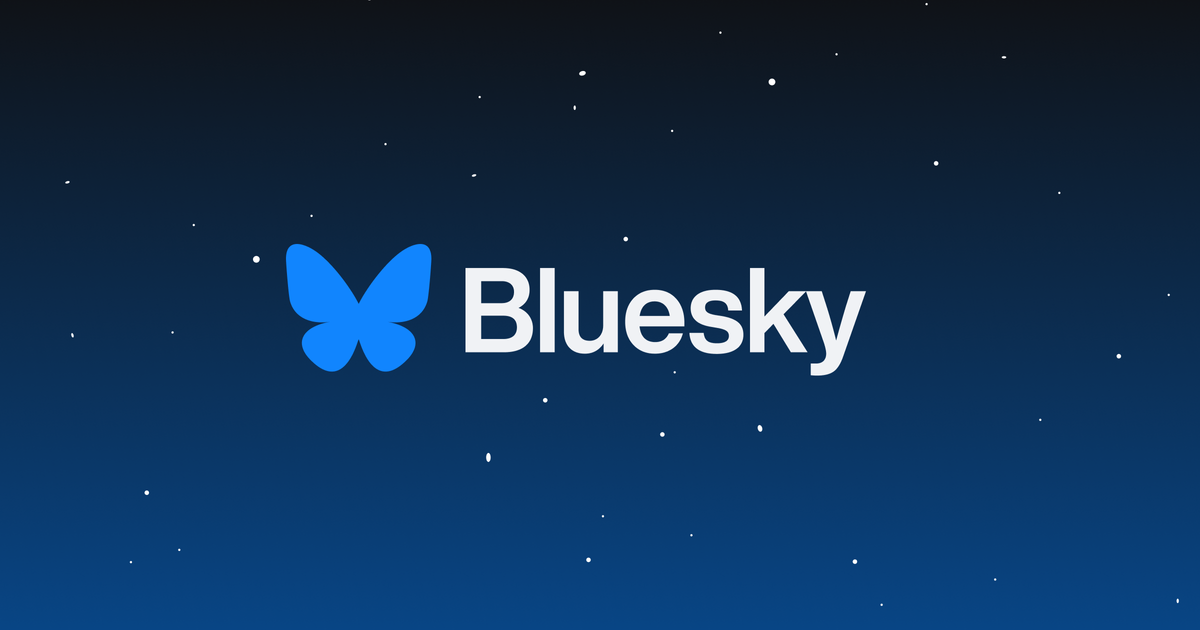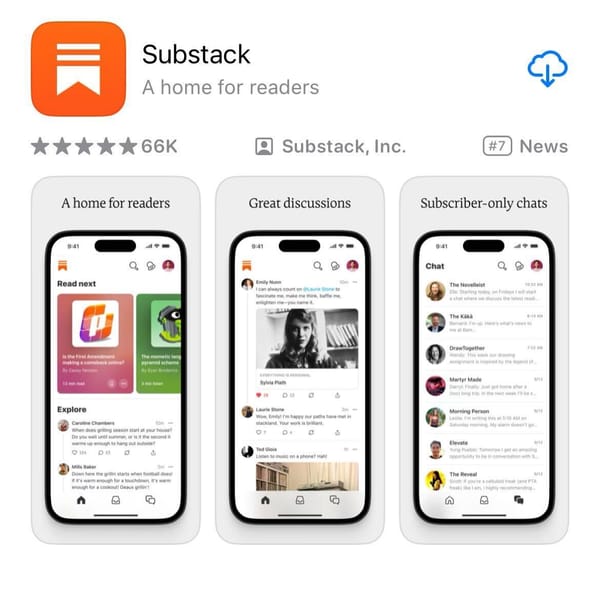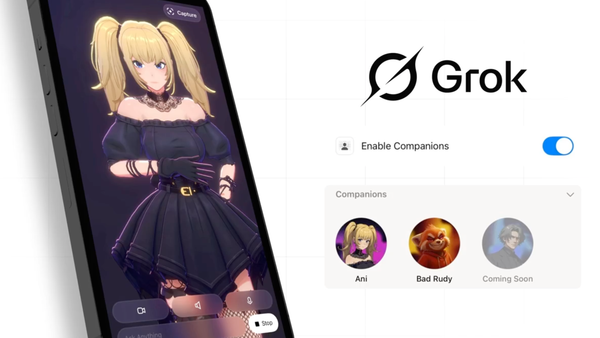Bluesky is back
Twitter’s natural heir is finally open to the public — and it has some big ideas for social networking

It has been the better part of the year since Bluesky had its big moment.
In May 2023, when the company invited its first batch of users, social networks were in a state of flux. The decline of Twitter had given rise to a handful of startups that challenged it, including Post, T2, Artifact, and Mastodon.
But none galvanized a segment of former Twitter users in quite the same way that Bluesky did. From the moment its doors opened, it seemed to capture the anarchic spirit of Twitter’s strangest corners. Posts were christened skeets, and the “What’s Hot” feed filled up with butts. Within days, Bluesky was home to both Rep. Alexandria Ocasio-Cortez and Dril. It wasn’t clear what Bluesky was for exactly, but most people there seemed to be having a good time, and that was enough to convince more than 3 million people to at least try it.
Nine months later, social networks have entered their post-Twitter shakeout. T2 and Artifact are gone. So is Twitter, which has since rebranded to X. And in the meantime, a genuinely popular alternative to X has emerged with Meta’s Threads, which launched last July and now has 130 million users a month.
For all that tumult, though, Bluesky has remained much the same. Unlike other pop-up social networks that come and go, Bluesky’s community has remained active and growing, while preserving the essential weirdness that has always distinguished it.
It has also remained invite-only, limiting its growth prospects — until today.
Here’s Will Oremus at the Washington Post:
Today, Bluesky is opening to the public after nearly a year as an invitation-only app, with [Jay] Graber as its CEO. With a little over 3 million users, it’s mounting a long-shot bid to take on the company that spawned it — and to set social media on a course that no single captain can control.
On the surface, Bluesky looks familiar to anyone who has used Twitter or Meta’s Threads, with a feed full of text posts and images from people you follow. Underneath, however, the company is building what Graber calls “an open, decentralized protocol” — a software system that allows developers and users to create their own versions of the social network, with their own rules and algorithms. She compared the idea to email, where users of different apps like Gmail, Outlook and Yahoo Mail can interact freely because they all run on the same underlying technology.
Over the past year, Graber told me this week in an interview, Bluesky’s roughly 40 employees have worked to build out the app’s infrastructure, the AT protocol that powers the network it, and the content moderation team and tools necessary to support the community. Now, she said, it’s time to see whether Bluesky can prove out a vision for what Twitter might have become: a decentralized service that anyone could build on, over time creating a more open and democratic network.
“We’re about to just see where this ecosystem goes,” Graber said.
That Bluesky made it even this far feels like a notable achievement. First conceived as a potential alternate path for Twitter by then-CEO Jack Dorsey in 2019, the project languished for two years before Graber was selected to lead it. Bluesky had barely been spun out as an independent public benefit corporation before Musk bought Twitter; had it not, it seems all but certain that Musk would have killed it.
Insulating social networks from this kind of corporate upheaval is, happily enough, one of the goals Bluesky set out to accomplish. Like Mastodon and its underlying ActivityHub protocol, Bluesky is built to devolve control back to its user base.
Already, there are at least 25 apps you can use to browse Bluesky, and users have created more than 25,000 customized feeds of content. (Graber enjoys one that shows her only photos of moss.) Soon, users unhappy with how Bluesky is run will be able to leave the default server with their username and followers intact, and can set up or join a new server with its own rules.
“We really wanted to let users control their scroll, and say, here’s a marketplace of algorithms,” Graber said. “And once you can choose, and you have the right to leave, then you can pick something good for you. We'll leave it up to you, the user, to choose.”
The network currently does not make any money. In time, it may launch an enterprise service to help people maintain their own servers or offer similar services. It is also considering taking a cut of sales on products within the network, such as the custom feeds that developers can build on it.
All in all, it’s a vision that seems built to appeal to the millions of disaffected social media users who have bristled at the control that platforms have long exerted over them. The question is whether it will be appealing enough to help Bluesky recapture the momentum it had last spring.
The odds are against it. But after talking with Graber and Rose Wang, Bluesky’s head of strategy operations and growth, I think it would be a mistake to underestimate their vision.
With that in mind, here are Bluesky’s advantages as it enters its next phase of development.
An active core community. Most social networks turn into ghost towns within a few months of launching. Bluesky, by contrast, has always been relatively vibrant. If I had to characterize Bluesky in four words, I’d go with “progressive politics and shitposts.” It often feels more lively than the community on Mastodon, which leans toward pedantry, and the one on Threads, which is comparatively buttoned-up.
Bluesky is funny. For the past few months now, almost every good post at the end of this newsletter has come from the weirdos on Bluesky. This is more of a gut feeling than an empirical fact, but I’d wager that the presence of comedians — both professional and amateur — is a strong indicator of success for a social platform. Especially a text-based social platform. Comedians signal to everyone else on the network that they are there to have a good time. Bluesky has them.
It’s a more user-friendly kind of decentralization. The benefits of decentralizing power are often outweighed by corresponding problems they create in the user experience. Bluesky’s AT Protocol set out to solve that in various ways. Unlike Mastodon, for example, you can search for usernames across the entire network, since the AT protocol has only one namespace. And the ability to follow custom feeds, which can be created by anyone, gives people much more control over their experience than the generic feeds ranked by engagement that you find in places like TikTok, X, and Threads.
It’s built for developers. The history of developing on Twitter is one of shattered dreams and broken promises. Bluesky set out to let developers do the things they had always wanted to on the old network: access the full firehose of posts; build their own clients; host their own servers. There’s lots of data for them to slice, dice, and design for, and as the user base grows, the economic opportunity for developers should grow along with it.
It’s built for publishers, too. Bluesky’s custom feeds ought to be a playground for digital publishers. Soon I expect you’ll be able to follow custom threads that show you all of a publication’s reporting, plus posts from their journalists. Publishers can also create custom labels and apply them to posts, which could enable a fact-checking organization to add “true” and “false” labels to viral posts that would be visible to anyone who subscribes to their feeds. And that’s just one example: the customization allows publishers to do a lot of useful, trust-building work that simply is not possible elsewhere. (To name another example, custom labels enable organizations to effectively verify their own employees’ accounts.)
It could be the future of content moderation. The past seven-plus years of mostly fruitless debate about online speech have focused on whether we ought to have more moderation or less. Bluesky is built to let us have it both ways. Those who want to scrub as much harmful speech from their feeds as possible are able to do so; those who relish a free-for-all can have that too. Bluesky’s plans to soon offer users a kind of app store for content moderation services promises to give users more control over the kinds of speech they see than anything we’ve seen to date.
It’s built to endure. For the moment, Bluesky controls the AT Protocol. Eventually, though, Graber wants to transfer ownership to some kind of web standards body that will allow for its continued open development. That could give us a social networking protocol to rival the protocols we have for email and the web itself. And it could even last beyond Bluesky itself.
Of course, there’s no guarantee that these advantages translate into real-world success. There’s a wonkiness about Bluesky that can be hard to translate to mainstream social network users, no matter how self-evident its benefits might seem to the network’s existing users. Threads has a massive head start in growth, a powerful tie to Instagram, and is based on a protocol that over time could adopt many or all of the features that are now unique to Bluesky.
Whatever the outcome, though, Bluesky has already contributed more new ideas to social networking than we have seen in quite a while. Time will tell whether Bluesky itself will realize the promise of the vision it has laid out. In the meantime, though, the company has come up with some very good answers to questions that have long left the rest of the industry stumped.
Governing
- The latest in spyware regulation:
- The State Department will restrict visas for individuals they believe are linked to misuses of commercial spyware. (Sam Sabin / Axios)
- Governments around the world should be more aggressive in fighting commercial spyware, Google researchers say. The company found about 40 commercial spyware vendors around the world — a worryingly high number. (AJ Vicens / Cyberscoop)
- The UK, France, and other allied countries are calling for international rules around the use of spyware. Long overdue. (Antoaneta Roussi / Politico)
- The AI Biden robocall discouraging New Hampshire primary voters from voting is linked to two Texas-based telecommunications companies, the state’s attorney general said. (David Wright, Yahya Abou-Ghazala and Brian Fung / CNN)
- The Public Interest Registry and the Internet Watch Foundation are partnering to track the spread of child sexual abuse material across domains. An important, positive step. (Sam Sabin / Axios)
- Google's trial over its alleged monopolization of the digital ad technology market is set to begin in September. (Mike Scarcella / Reuters)
- Google agreed to pay $350 million in a lawsuit settlement over a data leak from its defunct Google Plus website. (Gerrit De Vynck / Washington Post)
- Meta’s Nick Clegg said that there needs to be a standard in the industry to detect and label AI-generated content, and that Meta will start promoting its own standard. (Mike Isaac / The New York Times)
- And now OpenAI has an enhanced watermark of its own for DALL-E images. (Emilia David / The Verge)
- Meta is expanding availability of the Take It Down tool for non-consensual nude imagery into more languages as part of an effort to fight the extortion of teens. (Aisha Malik / TechCrunch)
- A look at how WhatsApp’s chats, under new EU rules, will soon work with other encrypted messaging apps like Signal, Messenger and iMessage. Messages from other apps will appear in their own inbox, among other things. (Matt Burgess / WIRED)
- There was a 49 percent increase in victims of ransomware last year, according to a threat intelligence firm, due to the impact of zero-day vulnerability exploits. (Lauren Feiner / The Verge)
- The UK government says it’s investing £100 million in AI – £90 million to establish nine AI research hubs, and £10 million for regulators to apply existing rules to AI developments. (Natasha Lomas / TechCrunch)
Industry
- If you forget your password on the Apple Vision Pro, you’ll have to bring it in store or mail it to AppleCare for a reset. Fun! (Mark Gurman / Bloomberg)
- Mark Zuckerberg said Meta has more data about its users for potential use in AI development than the CommonCrawl data set that serves as the basis for many LLMs, raising privacy concerns. (Parmy Olson / Bloomberg)
- YouTube TV now has more than 8 million subscribers, the company says. (Todd Spangler / Variety)
- YouTube CEO says the company’s top 2024 priorities include AI, creators, Shorts, safety, and watchtime on TV screens. (Abner Li / 9to5Google)
- Earnings news:
- Spotify saw a growth in international subscribers, beating analyst expectations, as the company posts the second-largest gain ever. (Ashley Carman / Bloomberg)
- Spotify is now the second largest audiobook provider after Audible, it says, after its big push into audiobook listening late last year. (Sarah Perez / TechCrunch)
- Snap missed quarterly revenue estimates, sending its shares plunging down by 30 percent. From exploding Pixie drones to more mass layoffs, Snap cannot catch a break lately. (Sheila Dang / Reuters)
- Roblox is rolling out a real-time, AI-powered translation that works across 16 languages, built on top of TextChatService. (Ryan Morrison / Tom’s Guide)
Those good posts
For more good posts every day, follow Casey’s Instagram stories.

(Link)

(Link)

(Link)
Talk to us
Send us tips, comments, questions, and your Bluesky handle: casey@platformer.news and zoe@platformer.news.





